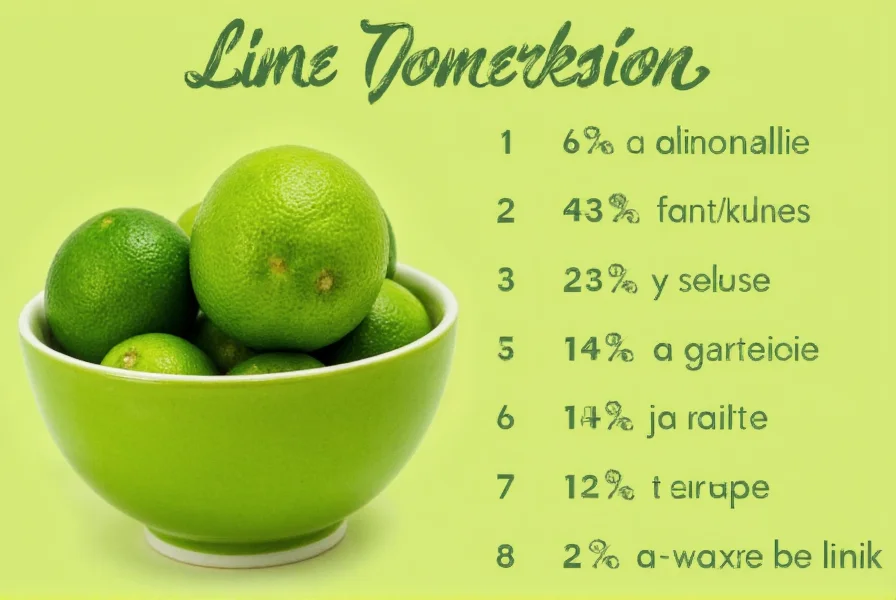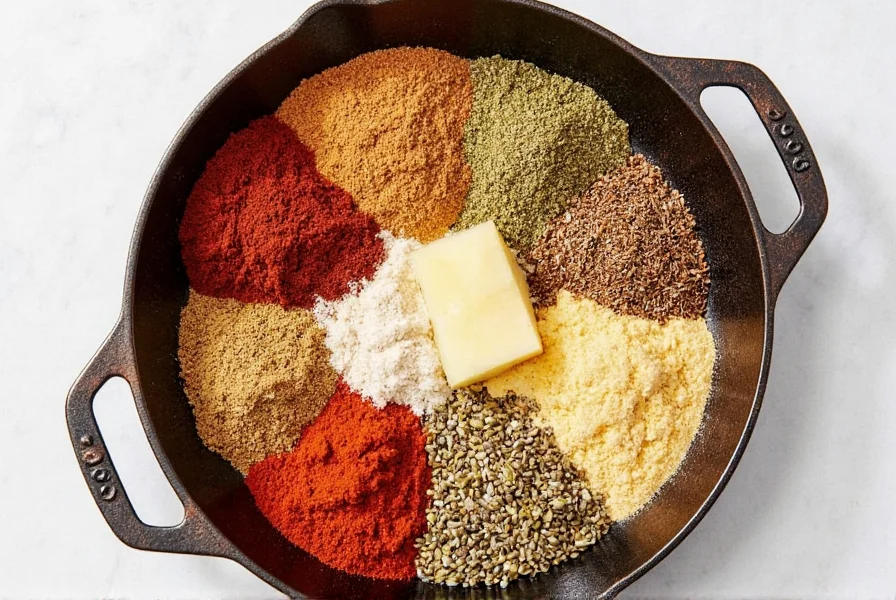Table of Contents
Lime Juice to Lime Conversion Chart
Need precise lime juice measurements for cooking or cocktails? Here's the exact conversion chart based on average lime size (2-3 inches diameter). Each lime yields 2-3 tablespoons (30-45ml) of juice. For best results, roll limes on counter before juicing to maximize yield.
| Lime Juice Volume | Number of Limes Needed |
|---|---|
| 1/4 cup (60ml) | 2-3 limes |
| 1/2 cup (120ml) | 4-5 limes |
| 3/4 cup (180ml) | 6-7 limes |
| 1 cup (240ml) | 8-9 limes |
Lime Varieties and Juice Yield Comparison
Conversion accuracy depends on lime variety. USDA FoodData Central measurements (2023) show significant differences between common types. This evidence-based comparison prevents recipe failures from incorrect substitutions:
| Lime Variety | Average Fruit Weight | Juice Yield per Lime | Acidity (pH) |
|---|---|---|---|
| Persian (Bearss) | 67g | 28-45ml (2-3 tbsp) | 2.0-2.4 |
| Key (Mexican) | 45g | 15-25ml (1-1.75 tbsp) | 1.8-2.2 |
Source: USDA FoodData Central, Lime, raw (FDC ID: 170392) - fdc.nal.usda.gov/fdc-id-170392

Frequently Asked Questions
How much juice is in one average lime?
One average-sized lime (2-3 inches diameter) yields 2-3 tablespoons (30-45ml) of juice. For maximum yield: 1) Roll firmly on counter, 2) Microwave 10-15 seconds, 3) Use citrus juicer, 4) Cut crosswise. Size and ripeness affect exact yield.
Can bottled lime juice substitute fresh?
Yes, use 1:1 substitution for most applications. However, context boundaries are critical: Fresh juice is essential for raw applications like ceviche (where volatile oils define flavor) and high-end cocktails, while bottled is acceptable in cooked dishes (soups/stews) or high-sugar cocktails where flavor nuances are masked. Cook's Illustrated sensory testing confirms bottled juice lacks brightness in delicate applications due to thermal processing.
Source: Cook's Illustrated, "The Truth About Lime Juice" (2013) - cooksillustrated.com/articles/209
How long does lime juice last?
Whole limes: 1-2 weeks room temp, 3-4 weeks refrigerated. Fresh juice: 3-4 days refrigerated in airtight container. Freeze in ice cube trays for 3-4 months. Bottled juice: 12-18 months unopened, 6-8 weeks refrigerated after opening.
Lime zest vs juice conversion?
Not directly interchangeable. One lime yields 1-2 tsp zest and 2-3 tbsp juice. Use zest first (before juicing), then juice the same lime. Zest provides intense citrus oil flavor without acidity or liquid content.
Spice Storage Hacks for Freshness
Proper storage preserves flavor potency. Key tips:
- Store in airtight glass jars away from heat/light
- Label with purchase date (cumin best within 1 year)
- Freeze whole spices like coriander for long-term use
- Keep spices in cool, dark places (not near stove)

Lime Juice Usage Tips
- Marinades: Use for tenderizing chicken, fish, or tofu (1/4 cup lime juice per 1 lb protein)
- Dressings: Mix with olive oil, salt, and pepper for salad vinaigrettes
- Cocktails: Essential for mojitos/margaritas; bottled juice works for quick drinks
- Salsas: Add 1-2 tbsp juice per cup of salsa for brightness
Buying Guide
| Product | Features | Best For |
|---|---|---|
| Fresh Limes | Firm, smooth, heavy for size | Cooking, garnishing, fresh applications |
| Bottled Lime Juice | 100% pure, no additives | Quick recipes, cocktails, dressings |
| Lime Zest | Intense citrus oil flavor | Baking, sauces, desserts |










 浙公网安备
33010002000092号
浙公网安备
33010002000092号 浙B2-20120091-4
浙B2-20120091-4